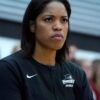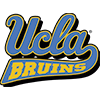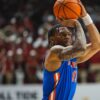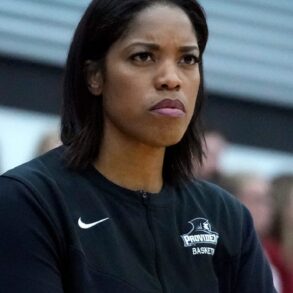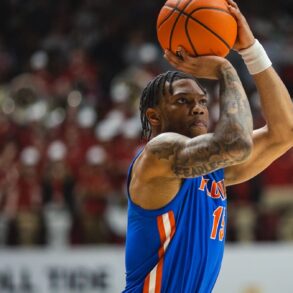Recruitment in Philippine collegiate basketball has truly evolved in the past few years. Gone are the days when programs relied solely on homegrown talent. Today, schools are aggressively pursuing talent from rival universities, international programs, and even pro-ready players that still have eligibility.
Social media is now often rife with the term “poaching” whenever a player transfers or commits to certain schools. While the term implies underhanded tactics or unethical recruitment, it also reflects the intensifying stakes in college where elite players are now seen as prized assets.
In a system with no formal transfer rules, student-athletes are simply exercising agency over their careers. The debate around poaching highlights deeper issues in the UAAP today — where the pull between tradition and change, and between school loyalty and a player’s personal growth, is becoming more visible than ever.
This buzz grew louder recently when FEU Tamaraws’ prized star Veejay Pre joined the UP Fighting Maroons. The reigning Season 87 Rookie of the Year made his choice after weeks of speculation on whether he would stay with the green-and-gold or seek an opportunity elsewhere.
For Pre, it was a tough call. He had been part of the FEU community since high school, playing for the Baby Tams in UAAP Seasons 85 and 86. In his rookie year in the seniors division, he was surrounded by the same core that played with him in the Morayta-based university, making it all the more difficult to walk away from a team that had become like family.
“I think this is the first time I’ve been in this situation where a kid loves his university, loves his teammates, and loves his coaching staff. But he has to make a decision for the best of his family,” FEU head coach Sean Chambers said following Pre’s departure.
DLSU and UP clarified that they did not try to “poach” Pre and didn’t try to swoon him to their camp unless he wanted to — a point that was not taken well by fans.
“What’s fortunate about all this is that hindi naman tayo nandun when reports and rumors began. We respected FEU, and kinausap lang natin si Veejay nung nakapag-decide at nakapagpaalam na siya sa FEU,” said Office of Athletics and Sports Development Director Bo Perasol.
From his perspective, Pre has already turned the page and was focused on embracing a new chapter in his basketball career with the defending UAAP champions. While the decision to leave FEU was far from easy, especially after spending his formative years with the university, Pre has started to settle in and look forward to what lies ahead with UP.
“Sa una, mahirap pero kailangan ko mag-adjust at nakakapag-adjust na ako mabuti. Masaya ako na nakakasama ko yung mga kuya ko dito at tuloy-tuloy pa rin yung improvement ko at growth ko here,” Pre said about his first few weeks with UP.
The transition hasn’t been without its challenges. Adjusting to a new system, coaching staff, and set of teammates requires time and trust. But with a veteran-laden lineup and a strong developmental culture, Pre’s ready to become a vital cog for UP’s future. With two more years left in his eligibility, expect him to be one of the team’s centerpieces as they continue to chase success for the maroon side.
“Excited pa ako lalo sa kung ano matututunan ko sa kanila at especially next year. Rine-ready ko yung sarili ko sa residency kasi gusto ko makatulong sa kanila and sa team, especially sa magiging improvement,” Pre said.
Will this trend of player movement across collegiate basketball continue? Absolutely. It’s a no-brainer. The follow-up question — is it ethical? — is where things get tricky. The short answer: maybe not. And that’s OK. Because the reality is, every UAAP team will always look for ways to strengthen its roster. In today’s landscape, that includes exploring not just high school prospects or overseas talent, but also players from rival programs.
In recent years, the most competitive programs have embraced this approach. National University secured former juniors MVP Jake Figueroa from Adamson. Ateneo is actively targeting one-and-done or two-and-through international players. UST has emerged as a landing spot for displaced stars like Forthsky Padrigao and Kris Porter.
With the resources and visibility of programs like UP and DLSU, they can realistically pursue almost any prospect in the country. This is the new normal. It’s aggressive, calculated, and entirely within the competitive spirit of the league.
Ultimately, this wave of recruitment isn’t about ethics in the traditional sense – it’s about adaptation. Players now have more freedom, and schools are evolving to keep up with the growing demands of winning and development.
Veejay Pre’s move to UP is not an outlier; it’s a snapshot of how college basketball works now. And whether we like it or not, the lines between opportunity and loyalty, between building and poaching, will only continue. Because in the UAAP today, winning is everything – and recruitment is the first battle.
This post was originally published on this site be sure to check out more of their content.


